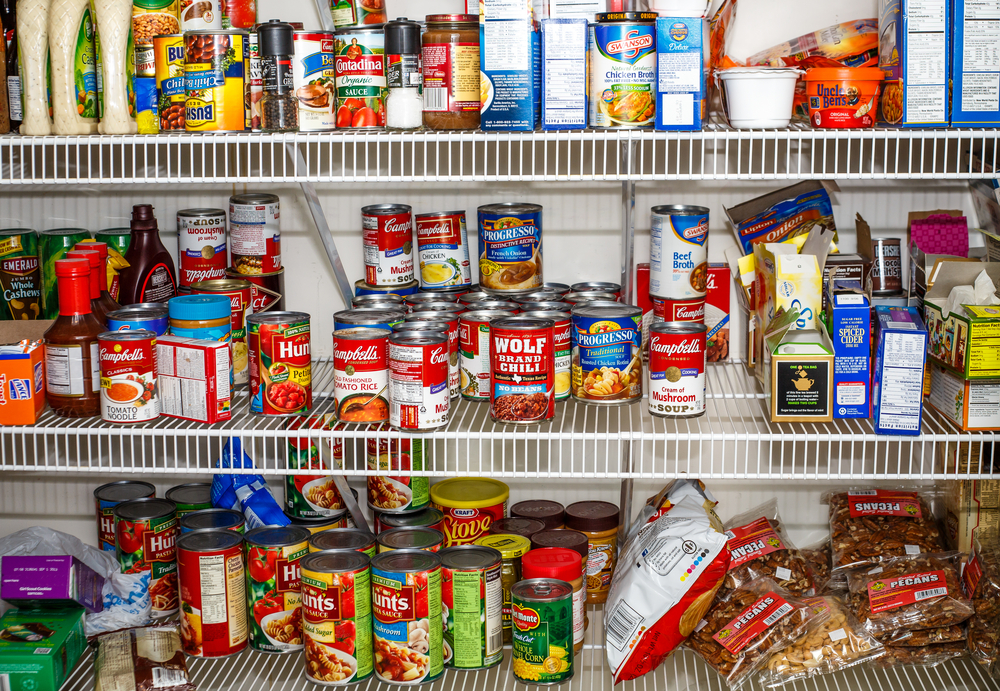Air pollution has become a significant health concern, especially in urban areas. The air we breathe contains various harmful toxins, including chemicals, particulate matter, and allergens, which can directly affect lung health. These pollutants may gradually damage your respiratory system, leading to a variety of symptoms that indicate your lungs are under stress. The signs of compromised lung health aren’t always immediately obvious, but over time, they can become more pronounced. It’s essential to be aware of the warning signals and take proactive steps to protect yourself. Here are 15 signs your lungs might be struggling due to poor air quality and tips on how to address these issues.
1. Persistent Coughing
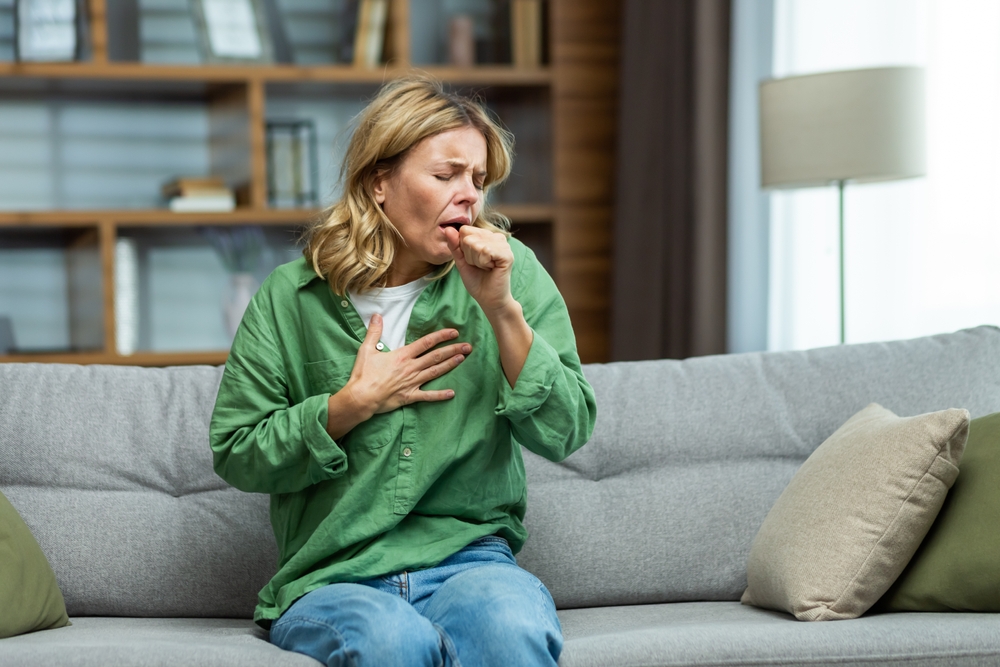
A constant or nagging cough, especially one that lingers for weeks or months, is one of the most common signs your lungs are affected by air quality. When you breathe in harmful particles or chemicals, your respiratory system reacts by trying to expel these irritants. This constant irritation can lead to persistent coughing. If your cough doesn’t improve after a few days or weeks, it might indicate that your lungs are struggling to cope with the toxins in the air. According to India Today, pollutants trigger bronchi constriction by activating peripheral nerve receptors, causing persistent coughing. In some cases, this cough may even become dry and unproductive, leaving you feeling exhausted and frustrated.
If the cough is accompanied by other symptoms, such as wheezing or shortness of breath, it’s essential to seek medical advice. Air pollution, especially fine particulate matter, can irritate the lungs and lead to chronic respiratory issues over time. Monitoring the quality of the air in your area and minimizing exposure to harmful pollutants can help reduce this issue. Additionally, using air purifiers indoors and wearing masks when going outside can mitigate some of the effects.
2. Shortness of Breath
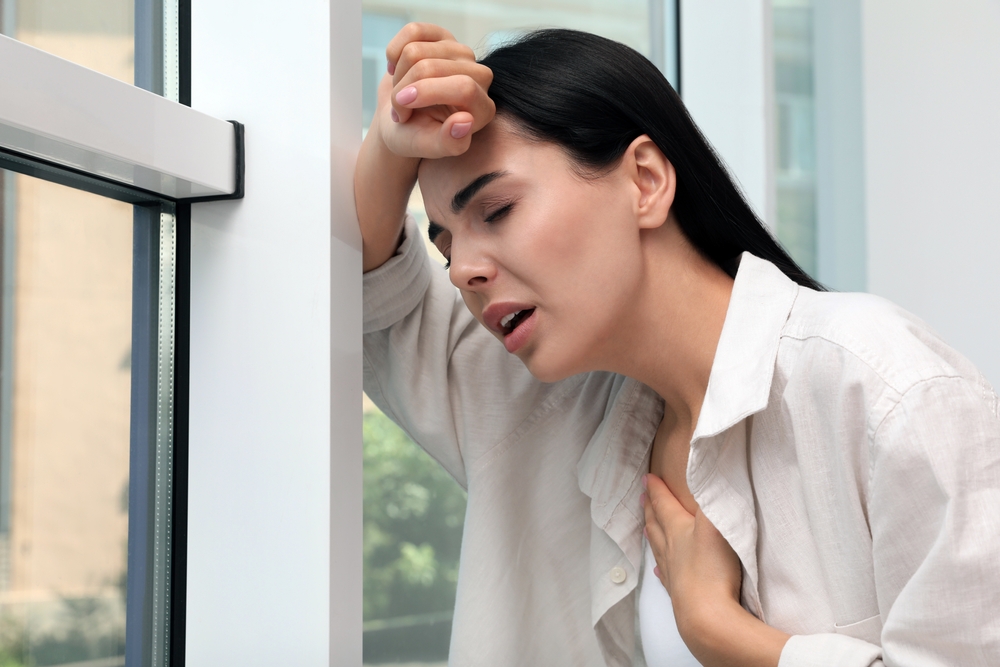
Feeling short of breath or having difficulty breathing can signal that the air you’re breathing is taking a toll on your lungs. Pollutants in the air, such as smog and ground-level ozone, can irritate the airways, making it harder for oxygen to reach your lungs efficiently. This results in a feeling of breathlessness or an inability to take deep breaths. If you experience this symptom regularly, especially during physical activity or in areas with heavy pollution, your lungs may be struggling to process the toxins in the air.
According to the Minnesota Pollution Control Agency, breathing in air pollutants can contribute to breathing difficulties and worsen lung diseases. If the shortness of breath becomes severe or is associated with chest pain, it’s crucial to seek immediate medical attention. Shortness of breath can also lead to feelings of fatigue and dizziness, further exacerbating the issue. It’s important to limit exposure to polluted air, especially during high-pollution days, and engage in respiratory exercises that can help strengthen your lungs.
3. Wheezing

Wheezing is a high-pitched whistling sound that occurs when you breathe, often caused by inflammation or narrowing of the airways. This can happen when your lungs are trying to expel irritants from toxic air. Wheezing is especially common in people with asthma or other pre-existing respiratory conditions, but even those without these conditions can develop wheezing after prolonged exposure to poor air quality. If the wheezing persists or worsens, it can indicate an issue with the airways that requires medical attention.
Wheezing is often accompanied by coughing and a sense of tightness in the chest. It can also become more pronounced at night, affecting your sleep quality. Managing exposure to pollution, using medications like inhalers if prescribed, and incorporating breathing exercises can help reduce wheezing. According to the European Respiratory Journal, exposure to pollutants like PM10 and NO2 is associated with airway changes and wheezing in children. However, if the wheezing is severe or continuous, it’s important to consult a doctor to rule out more serious conditions.
4. Chest Tightness
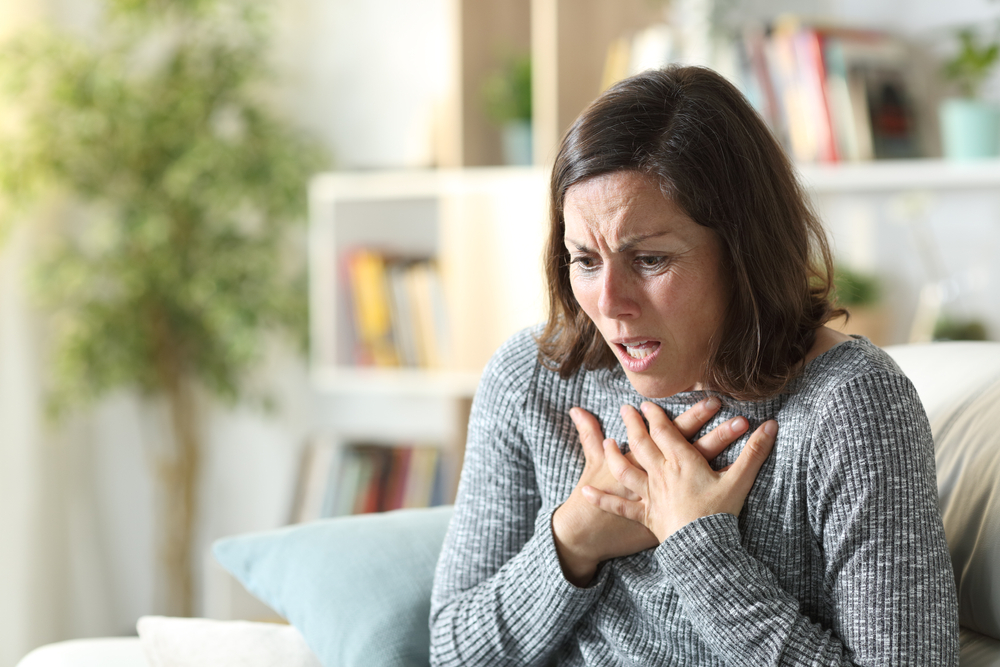
A feeling of tightness or pressure in the chest can be a sign that your lungs are struggling to breathe freely due to toxic air quality. This symptom can occur as a result of irritation from pollutants, which can lead to inflammation of the airways and tightening of the chest muscles. People living in areas with high pollution levels, such as industrial zones or cities with heavy traffic, are particularly vulnerable to this symptom. According to National Jewish Health, exposure to air pollutants can cause chest tightness and other respiratory issues. Chest tightness can be alarming, as it may feel similar to a heart-related issue.
If chest tightness is paired with difficulty breathing or other symptoms like dizziness, it’s essential to seek medical attention immediately. Reducing exposure to air pollution, staying indoors during high pollution days, and engaging in relaxation techniques like deep breathing can help alleviate this symptom. Long-term exposure can lead to chronic conditions, so it’s crucial to take preventive measures.
5. Excessive Mucus Production
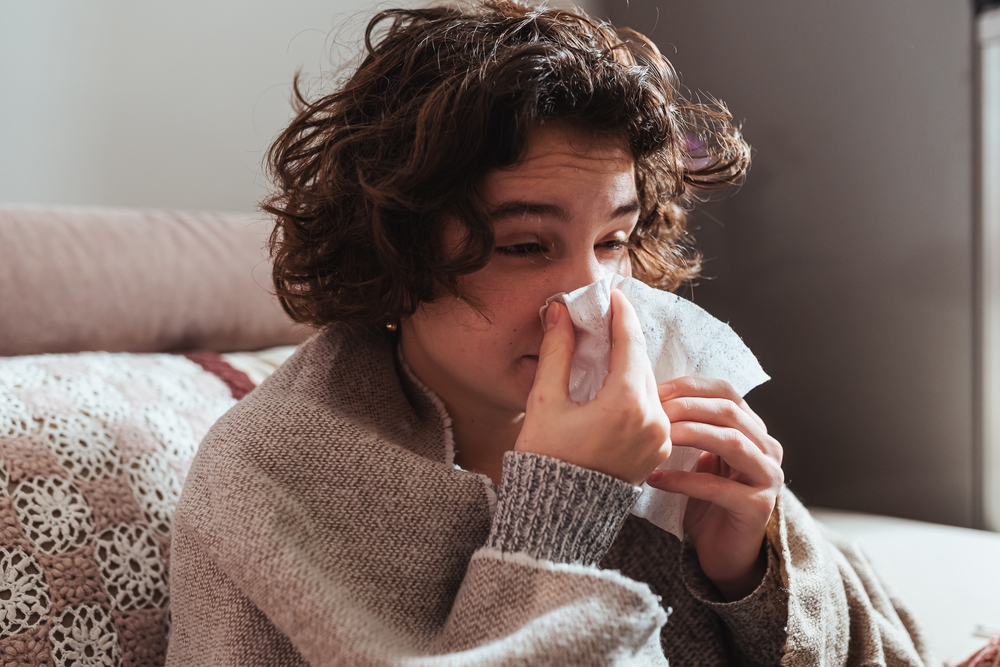
When the air you breathe is filled with harmful particles, your body may respond by producing excess mucus to trap and expel these irritants. This mucus buildup can lead to congestion, coughing, and a feeling of heaviness in the chest. While some mucus production is normal, especially in response to illness or allergens, excessive mucus in the absence of a cold or flu could indicate that the air quality is hurting your lungs.
The mucus may appear thicker and more difficult to clear, and you may experience post-nasal drip or a sore throat as a result. If your mucus production continues over time, it’s a good idea to consult with a healthcare provider. Taking steps like using a humidifier, staying hydrated, and avoiding areas with heavy pollution can help alleviate excess mucus production.
6. Sore Throat and Irritated Airways

Toxic air quality can cause a sore throat due to the irritation of the respiratory system. When you breathe in pollutants like dust, smog, or chemicals, they can dry out and inflame the sensitive tissues in your throat and airways. This can lead to a persistent scratchy throat, coughing, and discomfort. If this irritation doesn’t go away after a few days, it could indicate that your lungs are struggling to filter out the harmful particles in the air.
To help relieve a sore throat caused by poor air quality, drinking plenty of water, using throat lozenges, and avoiding further exposure to pollutants can help. It’s also beneficial to stay indoors during high-pollution days and use air purifiers to reduce indoor air contaminants. If the soreness persists or is associated with other symptoms, consider seeing a doctor for a thorough check-up.
7. Fatigue and Low Energy

If you’ve been feeling drained, it could be your lungs crying out for help due to poor air quality. The pollutants in the air can make it more difficult for your body to get the oxygen it needs, leading to feelings of fatigue and low energy. Over time, this lack of oxygen can affect your overall health, making even simple tasks feel exhausting. Persistent fatigue that isn’t relieved by rest may indicate that your lungs are not functioning optimally.
Getting fresh air, limiting exposure to polluted environments, and staying hydrated can help improve energy levels. Regular cardiovascular exercise can also improve lung function and boost overall energy. If fatigue persists despite lifestyle changes, it’s essential to consult a healthcare provider to rule out any underlying issues.
8. Headaches and Dizziness

Headaches and dizziness can often be attributed to poor air quality. When you inhale toxic air, your body may not get the oxygen it needs, which can cause tension headaches and feelings of lightheadedness. These symptoms are especially common in areas with high pollution levels. Long-term exposure to harmful air pollutants can also contribute to chronic headaches and increased dizziness, affecting your quality of life.
To alleviate these symptoms, make sure to stay in well-ventilated areas, take breaks from exposure to polluted environments, and use air purifiers to reduce indoor contaminants. Staying hydrated and getting enough rest can also help with symptoms. If headaches or dizziness persist, it’s important to seek medical advice to assess whether they are related to air quality or other factors.
9. Increased Risk of Respiratory Infections
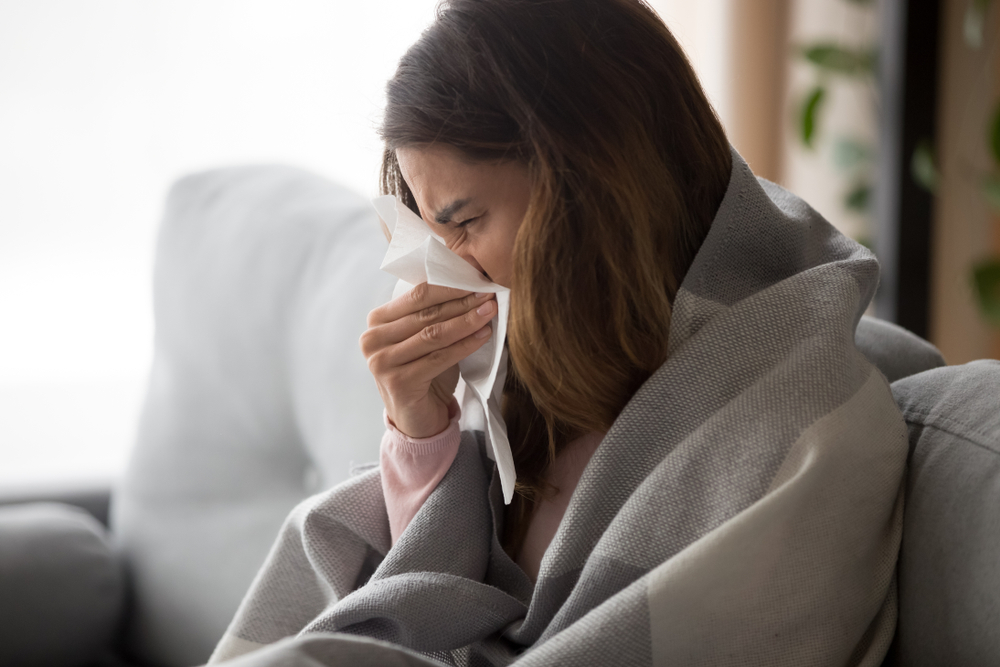
Poor air quality doesn’t just cause immediate discomfort; it can also increase your vulnerability to respiratory infections. When your lungs are constantly exposed to toxic particles, they become more susceptible to infections such as pneumonia, bronchitis, and other respiratory illnesses. The damage caused by prolonged exposure to pollutants weakens the lung’s ability to defend itself, making it easier for bacteria and viruses to take hold.
If you find that you’re getting sick more often, especially with respiratory symptoms, it may be due to the poor air quality around you. Strengthening your immune system, reducing exposure to pollutants, and practicing good hygiene can help lower your risk. Consult a healthcare provider if you have frequent respiratory infections to see if air quality is contributing to your symptoms.
10. Skin and Eye Irritation
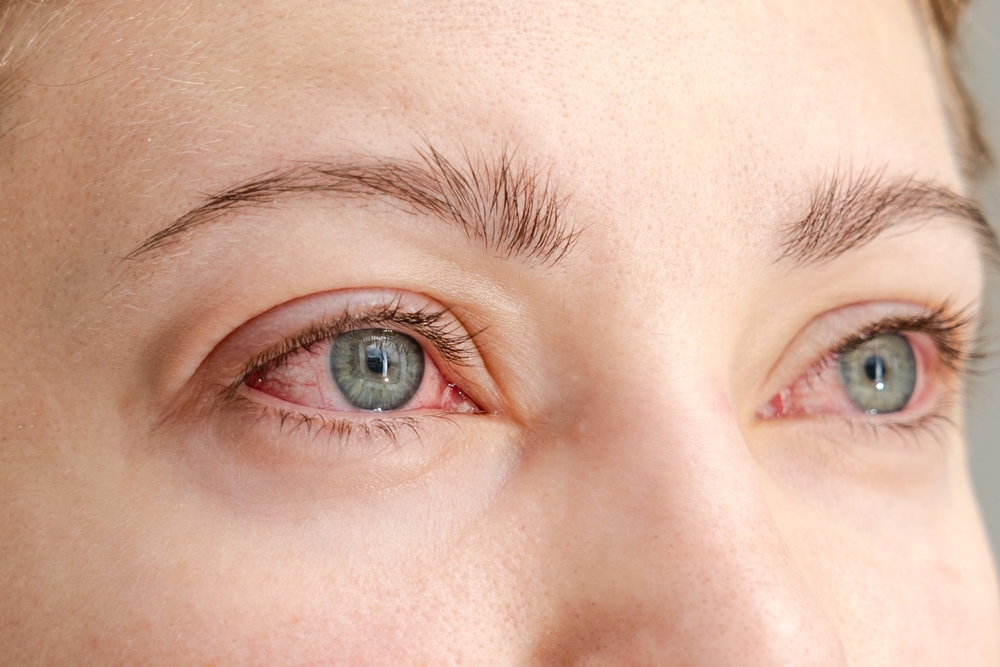
Air pollution doesn’t just affect your lungs—it can also irritate your skin and eyes. Pollutants like particulate matter and chemical fumes can irritate the sensitive skin on your face and eyes, causing redness, dryness, or itching. If you experience these symptoms regularly, it could indicate that the air you’re breathing is filled with harmful toxins. Chronic exposure to polluted air can exacerbate these issues and lead to more severe conditions, such as eczema or conjunctivitis.
To protect your skin and eyes, wear protective sunglasses when outdoors, use moisturizers to shield your skin, and rinse your eyes with water if they become irritated. Avoiding outdoor activities during high-pollution periods and using air purifiers indoors can also help reduce exposure to harmful particles.
11. Sudden Weight Gain or Swelling

Unexpected weight gain or swelling, especially in the abdomen and legs, may also be related to poor air quality. When the body is exposed to toxins in the air, it can trigger inflammation, which may cause water retention or bloating. These symptoms can worsen over time as your body becomes more sensitive to pollutants. If weight gain or swelling is accompanied by difficulty breathing or chest tightness, it could indicate that your lungs are struggling to function properly.
To manage this, avoid areas with poor air quality and ensure your living space is well-ventilated. Eating anti-inflammatory foods, exercising regularly, and staying hydrated can help reduce bloating and swelling. If symptoms persist, it’s essential to consult with a healthcare provider to rule out any underlying health conditions.
12. Increased Sensitivity to Allergens

Exposure to poor air quality can also make your respiratory system more sensitive to allergens such as pollen, dust, and mold. Pollutants in the air weaken the protective barriers in your airways, making it easier for allergens to irritate. If you find yourself sneezing more often or developing allergic reactions, such as itchy eyes or a runny nose, it could be due to a combination of pollutants and allergens in the air. This heightened sensitivity can lead to more frequent or severe allergy symptoms, especially during peak allergy seasons.
To reduce the effects of allergens, it’s essential to keep your home free of dust and other irritants by regularly cleaning and using air purifiers. During times of high pollen counts, limit your time outdoors and keep windows closed. If allergies become more severe, consider consulting an allergist to manage your symptoms more effectively.
13. Chronic Throat Clearing

Constantly clearing your throat is another sign that your lungs are having trouble dealing with toxins in the air. When air quality is poor, irritants such as dust, smoke, and pollution can cause inflammation in the throat and airways. This can lead to the sensation of needing to clear your throat frequently, even if you’re not sick. Chronic throat clearing can be disruptive and annoying, especially when it becomes persistent.
While it may seem like a minor issue, constant throat clearing can lead to soreness, further irritation, and even vocal cord damage if left unchecked. To alleviate this, try drinking warm liquids, using throat lozenges, or staying hydrated. If the problem persists and worsens, it might be time to see a healthcare provider who can help identify if environmental factors are contributing to your symptoms.
14. Difficulty Sleeping Due to Respiratory Distress
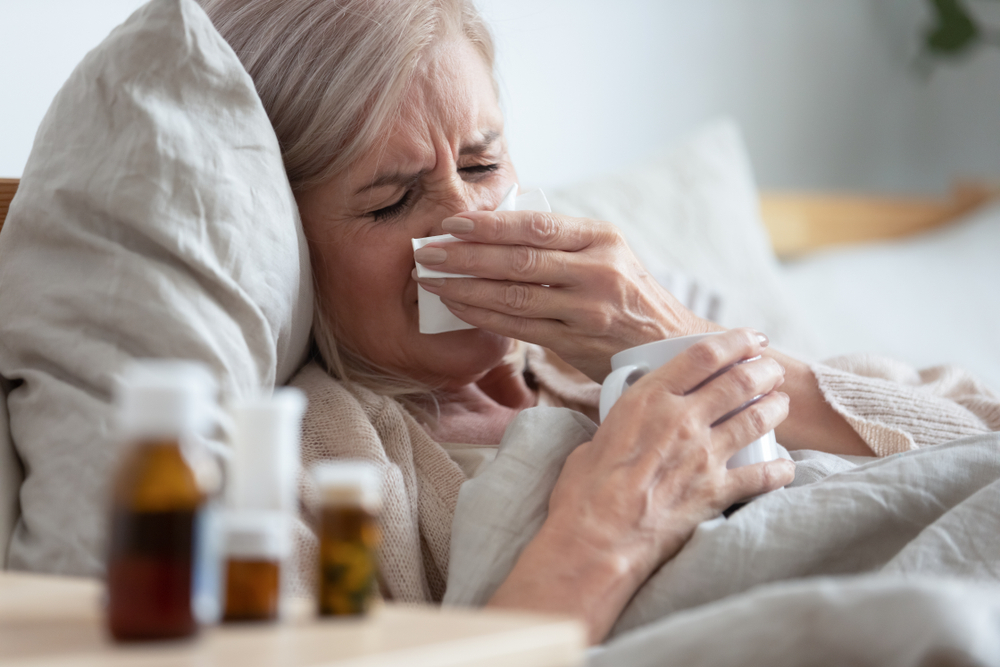
Breathing problems caused by poor air quality can make it difficult to sleep. If your lungs are struggling with pollutants, you may experience shortness of breath or a feeling of tightness in your chest, particularly when lying down. This can lead to disrupted sleep patterns, making it hard to get the restful sleep you need. Sleep disturbances from air quality issues can also contribute to feelings of fatigue and general health decline.
To improve sleep quality, create a clean air environment by using air purifiers in your bedroom, keeping windows closed at night, and avoiding outdoor exposure to pollution before bedtime. Practicing deep breathing exercises before bed can also help reduce the feeling of tightness in the chest. If you continue to have trouble sleeping or experience severe difficulty breathing during the night, consult a doctor to rule out conditions like asthma or sleep apnea.
15. Inability to Recover from Physical Activity

If you find it takes longer than usual to recover from physical activity, it might be a sign that poor air quality is affecting your lungs. When your lungs are struggling to filter out toxins from the air, your body may have a harder time getting the oxygen it needs during exercise. This leads to longer recovery times, muscle fatigue, and an overall decrease in stamina. If you’re regularly noticing that your body feels drained or your workouts leave you more exhausted than usual, air pollution could be a contributing factor.
To counteract this, try to avoid exercising outdoors during times of high pollution. Opt for indoor workouts with good ventilation, or do your activities in the early morning or late evening when pollution levels tend to be lower. Taking steps to improve your lung health, such as using air purifiers and reducing exposure to toxins, will help your body recover more quickly and maintain peak physical performance.
Natasha is a seasoned lifestyle journalist and editor based in New York City. Originally from Sydney, during a stellar two-decade career, she has reported on the latest lifestyle news and trends for major media brands including Elle and Grazia.


